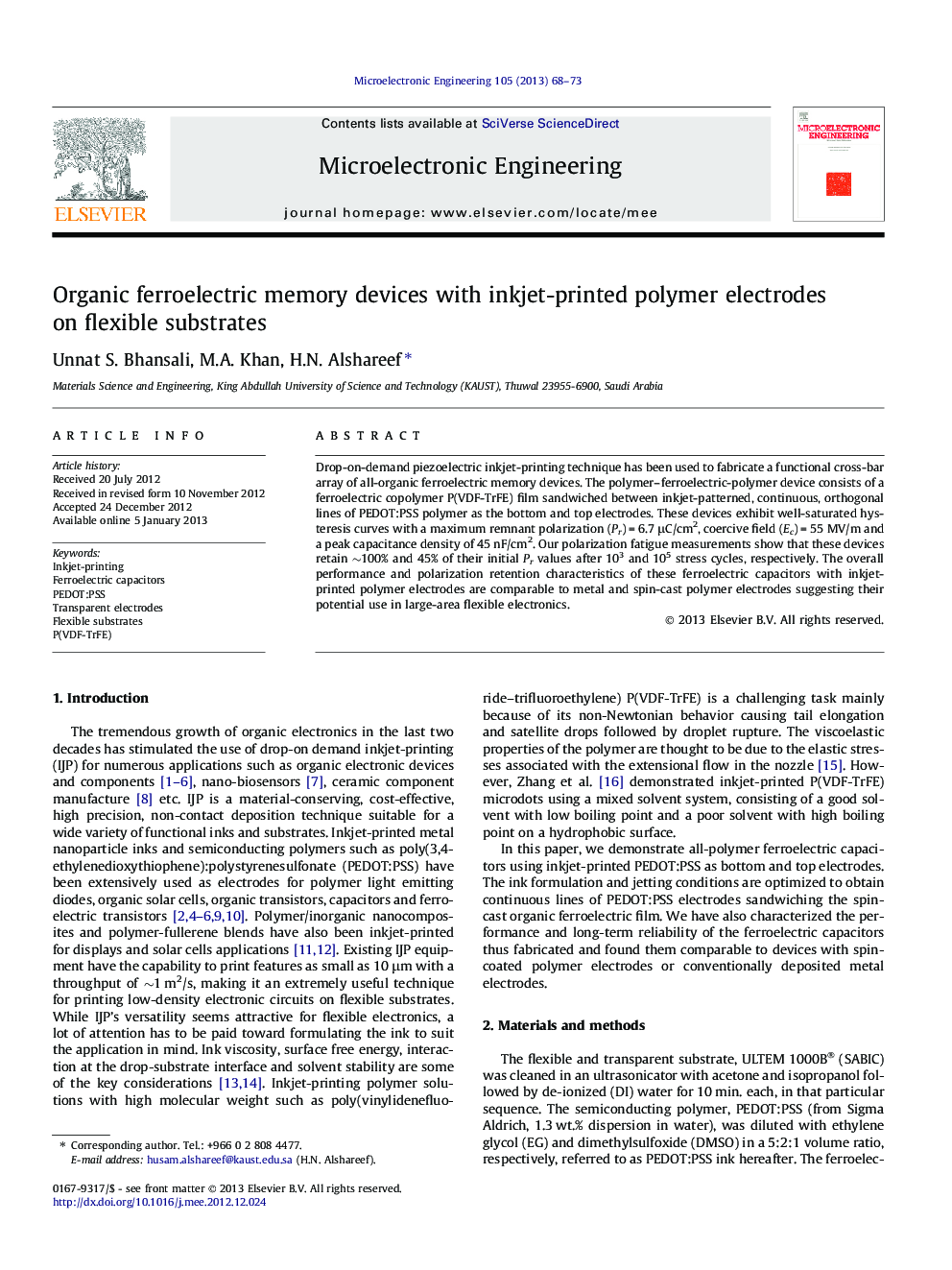| Article ID | Journal | Published Year | Pages | File Type |
|---|---|---|---|---|
| 542905 | Microelectronic Engineering | 2013 | 6 Pages |
Drop-on-demand piezoelectric inkjet-printing technique has been used to fabricate a functional cross-bar array of all-organic ferroelectric memory devices. The polymer–ferroelectric-polymer device consists of a ferroelectric copolymer P(VDF-TrFE) film sandwiched between inkjet-patterned, continuous, orthogonal lines of PEDOT:PSS polymer as the bottom and top electrodes. These devices exhibit well-saturated hysteresis curves with a maximum remnant polarization (Pr) = 6.7 μC/cm2, coercive field (Ec) = 55 MV/m and a peak capacitance density of 45 nF/cm2. Our polarization fatigue measurements show that these devices retain ∼100% and 45% of their initial Pr values after 103 and 105 stress cycles, respectively. The overall performance and polarization retention characteristics of these ferroelectric capacitors with inkjet-printed polymer electrodes are comparable to metal and spin-cast polymer electrodes suggesting their potential use in large-area flexible electronics.
Graphical abstractFigure optionsDownload full-size imageDownload as PowerPoint slideHighlights► Demonstrated a fully-functional cross-bar array of organic ferroelectric memory on flexible substrate. ► Inkjet-printed PEDOT:PSS lines as top and bottom electrodes. ► Ferroelectric behavior with a Pr ∼ 6.7 μC/cm2 and Ec ∼ 55 MV/m is comparable to metal or spin-cast polymer electrodes. ► Polarization retention ∼45% after 105 fatigue cycles at 10 Hz.
